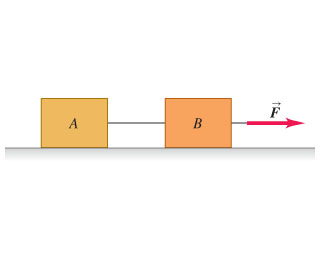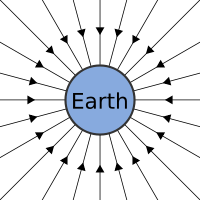Unit 2 Review (Dynamics)
4 min read•july 11, 2024
Erin Brzusek
AP Physics 1 🎡
257 resourcesSee Units
Here is an outline for AP Physics 1, Unit 2: Dynamics, created in accordance with the 2019 course and exam description published by the College Board.
Be sure to review the past FRQ prompts published by CollegeBoard (Gravitational Forces, Friction and Newton’s Second Law) and check out this Quizlet to take a look at a couple important terms and key concepts from this unit. You got this! 💪
🤓 There's more AP Physics 1 review inside of Fiveable. Check out all the guides, slides, and videos!
Dynamics
⚡ Watch: AP Physics 1 - 🎥 Introduction to Forces
- Dynamics is defined as the branch of mechanics detailing the motion of objects or systems under the action of forces.
In this unit, students are introduced to force, which is the interaction of an object with another object. In order to accomplish this, students build upon the information presented in Unit 1, specifically free-body diagrams. Also, students must be able to showcase the same object–force interactions through different graphs, diagrams, and mathematical relationships. Unit 2 further encourages students to form new expressions from basic principles to help them make predictions in unfamiliar contexts.
Systems
⚡ Read: AP Physics 1 - Systems
- A system is an object or a collection of two or more objects that is treated as having no internal structure. A system approach is often used to find the acceleration (F = ma, according to Newton's Second Law of Motion) in which the total mass of the system is used.
In the following image, the rope holding the system together is representative of a force known as tension. Tension between objects remains the same regardless of friction or not. In systems, internal interactions such as these have little changes or none at all which is why it can be regarded as an object.

The Gravitational Field
⚡ Watch: AP Physics 1 - 🎥 The Gravitational Field
- The force of gravity on Earth is given by the equation F = mg. M is the mass in kilograms of the object and G is 9.8 m/s/s (However, it is acceptable to use 10 m/s/s on the AP exam). This force is also known as Weight (W) or the Force of Gravity (Fg). If this is the only force exerted on an object, the object is said to be in free fall.

If you recall from Kinematics, an object's acceleration is equal to 9.8 m/s/s when an object is in free fall.
Contact Forces
⚡ Read: AP Physics 1 - Contact Forces
- Contact forces result from one object or system interacting with another. In AP Physics 1, these forces include tension, friction, normal, and spring. Tension is when an object is pulled by a rope, string or chain. Friction is the opposition to motion (can be kinetic or static). Normal force is when an object is in contact with another object. Last but not least, spring force is when an elastic material is compressed or extended.
Newton's First Law
⚡ Watch: AP Physics 1 - 🎥 Newton's First Law
- Newton’s First Law states that “every object persists in its state of rest or uniform motion in a straight line unless it is compelled to change that state by forces impressed on it." ⬅️➡️
This law deals with two main concepts in physics: the principle of inertia and the principle of frames of reference. Newton’s First Law is sometimes known as the Law of Inertia because it explains the concept that objects have the tendency to resist a change in motion.
- Inertial Mass - mass that is accelerated (mass in motion)
- Gravitational Mass - mass based on an object’s weight (mass being pulled by the gravitational field) 🌎
Newton's Second Law
⚡ Watch: AP Physics 1 - 🎥 Newton's Second Law and Solving Newton's Second Law Problems
- Newton’s Second Law states, “The acceleration of an object as produced by a net force is directly proportional to the magnitude of the net force, in the same direction as the net force, and inversely proportional to the mass of the object.”
- Key equation: Force = mass x acceleration (F = ma)
Newton's Third Law
⚡ Watch: AP Physics 1 - 🎥 Newton's Third Law
- Newton’s Third Law states that “For every action, there is an equal and opposite reaction.”
- In other words, an object cannot exert a force on itself.
- Action-Reaction Pair: The force exerted on an object is the action, and the force experienced by the object is the reaction. Action-Reaction pairs occur only when two objects interact. (Example: a book pulling down on a table <-> a table pushing up on a book.)
Browse Study Guides By Unit
👟Unit 1 – Kinematics
🌀Unit 2 – Dynamics
🚀Unit 3 – Circular Motion & Gravitation
⚡️Unit 4 – Energy
⛳️Unit 5 – Momentum
🎸Unit 6 – Simple Harmonic Motion
🎡Unit 7 – Torque & Rotational Motion
💡Unit 8 – Electric Charges & Electric Force
🔋Unit 9 – DC Circuits
🔊Unit 10 – Mechanical Waves & Sound
📚Study Tools
🧐Exam Skills

Fiveable
Resources
© 2025 Fiveable Inc. All rights reserved.